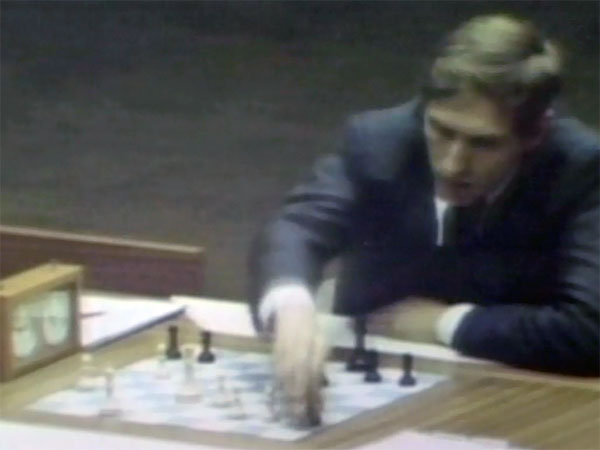


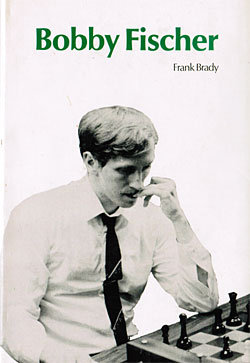 The Match of the Century started with game one on July 11, 1972. It is wonderfully described in Frank Brady's 1974 book Bobby Fischer, which appears to be out of print. We bring you excerpts of the events on day one.
The Match of the Century started with game one on July 11, 1972. It is wonderfully described in Frank Brady's 1974 book Bobby Fischer, which appears to be out of print. We bring you excerpts of the events on day one.
"When Fischer awoke on the afternoon of the first game, July 11, 1972, and it slowly began to permeate his consciousness that he was actually in Iceland playing for the championship of the world, he was nervous. After years and years of tribulations and controversy, and the recent brouhaha about the match, Fischer had arrived at the threshold of his lifelong goal. Laugersdalhöll was to be his universe for the next two months.
All details had been checked and double-checked in the playing hall to ensure maximum comfort for the players. Laugersdalhöll is a cavernous, dome-shaped stadium (someone described it as a large Icelandic mushroom), with huge, white-covered sound baffles on the ceiling that resemble mammoth albino bats. The entire first floor was covered with carpeting to muffle the sound of entering and exiting spectators, and the folding seats were replaced with upholstered and consequently "soundless" chairs. The two film towers were pushed back, on Fischer’s request, and the lighting intensity on stage was increased. A handsome, Eames-designed executive swivel chair, an exact duplicate of the one he sat in while playing Petrosian in Buenos Aires, was flown in from the U.S.

The Spassky-Fischer Match of the Century was played in Laugardalshöllin, a giant sporting arena. This is how it looked before the start of the match.

Bobby was driven to the Stadium by Lombardy, and due to heavy traffic they arrived shortly after five o'clock, the scheduled starting time. Fischer rushed through the backstage corridor on to the horticultured stage, and was greeted by the polite applause of an audience of 2,300 spectators.

Spassky made his first move precisely at five – and Schmid started Fischer's clock

Fischer, dressed in a white shirt and blue conservative business suit, sped to the table
The two men shook hands while Fischer kept his eyes on the board. Then he sat down in his black leather chair, considered his move for ninety-five seconds, and played his Knight to his King Bishop's third square.
As moves were made on the board, they were simultaneously shown on forty closed-circuit television monitors in all points of the stadium. In the cafeteria, where spectators wolfed down the local variety of lamb-based hot-dogs and gurgled bottles of two-percent Icelandic beer, the action on the stage was discussed vociferously. In the basement, Icelandic masters more quietly explained and analyzed the moves on a large demonstration board, while in the press rooms, a condescension of grandmasters surveyed the television screens and analyzed in their heads, to the confusion and awe of most of the journalists. In the playing hall itself, decorum and quiet reigned. But when it did not, Lothar Schmid or the Assistant Arbiter, Gudmundur Arnlaugsson, would activate a large white electrical sign that insisted, in both English and Icelandic, upon immediate attention: Silence! Thögn!
End of excerpt from Brady's book. On my recent trip to Iceland Gardar Sverrisson showed me a window that had been cut into the back wall in 1972:
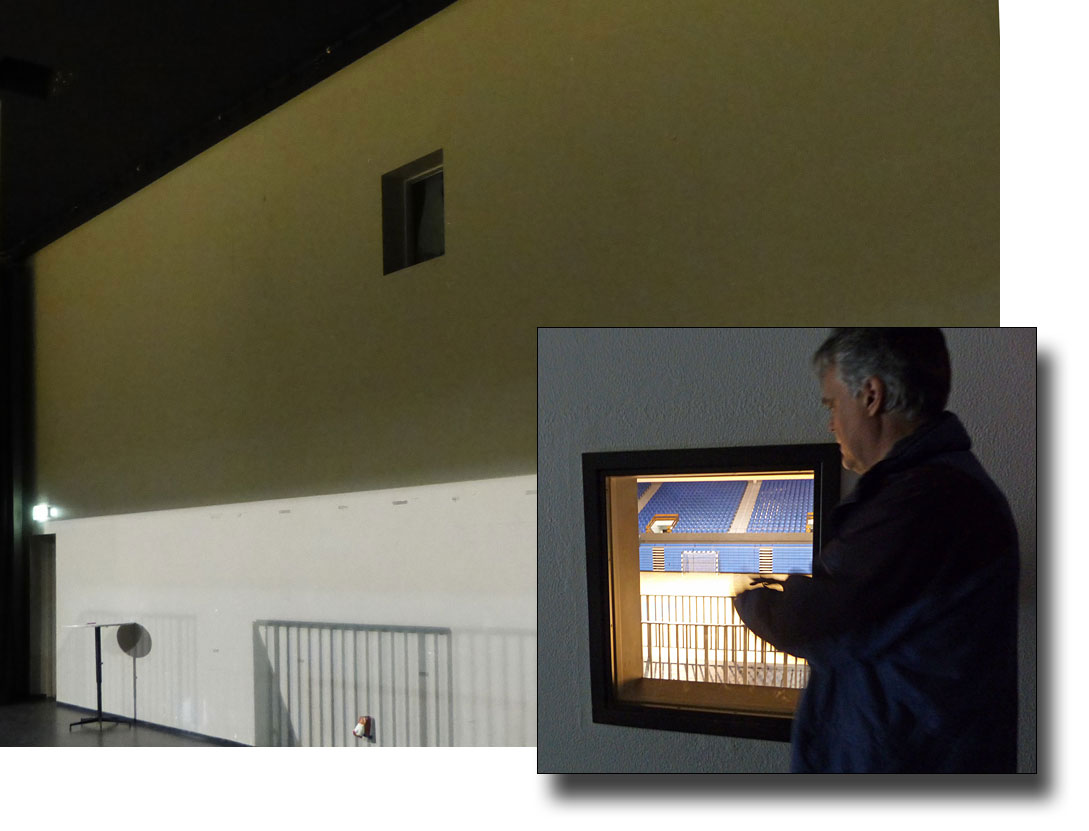
The window was installed so that cameras could film the action from the other side

Original film footage shot by the rear window camera (during game one in 1972)
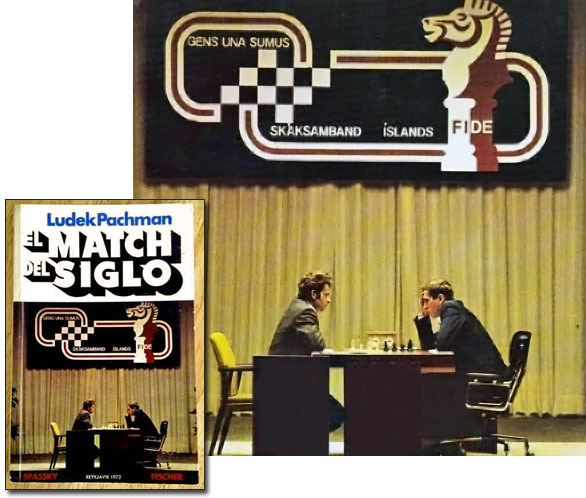
On the cover of Ludek Pachman's book we have an image of the stage: the window is hidden in the FIDE logo banner. Fischer noticed and complained about it.
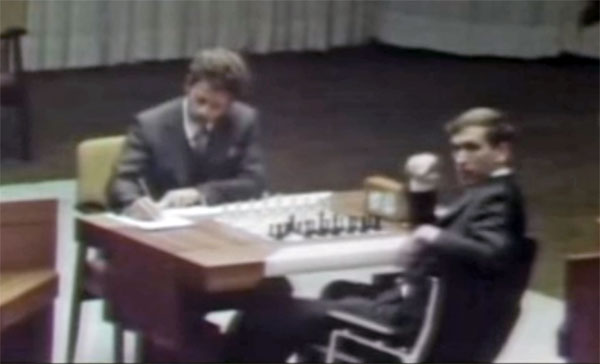
If you watch this video of game one you will see that Fischer was very uncomfortable with the setup – he is clearly preoccupied with the cameras in the hall.
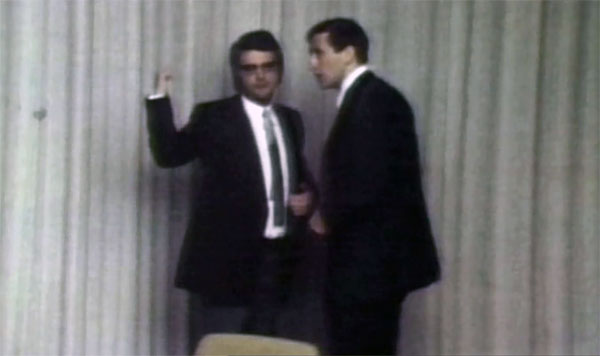
Fischer goes over to the chief arbiter Lothar Schmid to vigorously protest. Lothar can't do anything about it and the games proceeds.
 I hand over to Brad Darrach, journalist and film critic, who wrote one of the most influential books on Bobby Fischer – first published in 1974, and still a fascinating read. Get a copy – mine, pictured on the right, cost $2.95 a couple of decades ago. In it Darrach describes the key moment of game one (excerpts):
I hand over to Brad Darrach, journalist and film critic, who wrote one of the most influential books on Bobby Fischer – first published in 1974, and still a fascinating read. Get a copy – mine, pictured on the right, cost $2.95 a couple of decades ago. In it Darrach describes the key moment of game one (excerpts):
The game developed with curious blandness on both sides and soon arrived at a "standard position" in the Nimzo. Spassky had often reached this position before, Bobby never. Why had Bobby urged the action into this form now? When was the zinger coming?
The zinger never came. Slyly repeating, move for move, a game that Spassky and Krogius had played in 1958, Bobby brought the position dead even.
Spassky sat staring at the board for twenty minutes. He decided there was nothing to do but nudge the game gently toward one of those sleepy standoffs known as a grandmaster draw. After the twenty-eighth move, the position was so hopelessly drawn that five hundred ticket-holders went home. Another five hundred were jostling in the lobby, some picking up souvenirs, some buying commemorative stamps.
"Too bad," Thorarinsson was saying to a Yugoslav reporter. "We had hoped for an exciting game to get the match going." "I don't know what's got into him," Lombardy was mumbling to another grandmaster in the press room, where most of the Western experts were sitting. "Maybe he's just too worn out to play. Well, I better go backstage. Couple more moves, they'll call it a draw." As Lombardy rose, Bobby made his twenty-ninth move.

In a balanced position Fischer captured the pawn on h2 with his bishop...
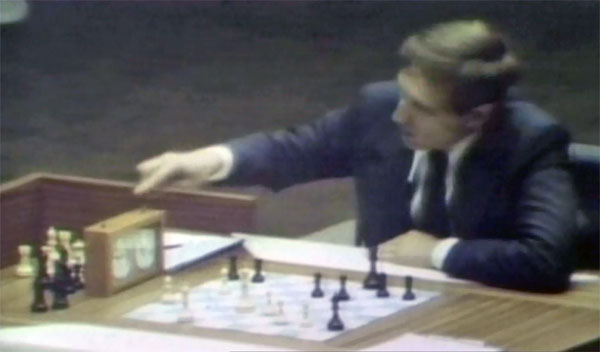
...and calmly pressed his clock
Bishop takes Pawn!? Spassky jolted like a man hit by a bullet and stared at the board. Four seconds later, the move was flashed on the closed-circuit TV. Lombardy's jaw dropped. "What!" Byrne yelled, and went pale. At the other end of the lobby, Geller gasped and grabbed Krogius' arm. "It's a mistake!" grandmaster Gligoric told grandmaster Olafsson. "They put the wrong move on the screen!"
But it wasn't a mistake. Geller, Nei and Krogius stared at the nearest TV screen, heads together, mumbling excitedly. Byrne and Lombardy began shuffling pieces in Byrne's chess wallet. A dozen reporters clustered around them. "Jesus!" Byrne gasped. "Maybe Bobby's got something!" Down in the analysis room, an Icelandic master was moaning, "I don't get it! What does he see that I don't see?"
A roar filled the lobby. People in the restaurant were yelling so loud the noise could be heard in the playing hall. In sixty seconds every entrance to the hall was choked with people charging back in. "Bobby's attacking! Bobby took a poisoned pawn! Bobby busted the game wide open!" Thorarinsson stood in the center of the lobby, his grin spreading from wall to wall. "One move," he said blissfully, "and we hit every front page in the world!"
In his book Brady writes:
29...BxKRP? An incredible blunder caused by Fischer's overenthusiastic attempt to win an obviously drawn game. He overlooked that after 30 P-N3 P-KR4 31 K-K2 P-R5 32 K-B3 P-R6 33 K-N4 B-N8 34 KxP BxP White cuts off the escape of Black's Bishop by playing 35 B-Q2." We have full analysis of the critical moment below.
On his forty-first move, Spassky, to take advantage of overnight analysis, decided to adjourn the game. Since five hours, the official adjournment time, had not yet been reached, he took a loss of thirty-five minutes on his clock. Spassky had a Bishop and three Pawns against Fischer's five Pawns. He sealed his move and handed the large brown envelope to Schmid.
As the crowds began to file out, Fischer drove back to the Loftleider to analyze the position with Lombardy, discussing it in the car without sight of the board. Byrne said: "Fischer is playing desperately for a draw." Larry Evans felt Fischer had drawing chances, "perhaps." Gligoric thought Fischer's chances were "slim." But Krogius said it was "probably a draw."
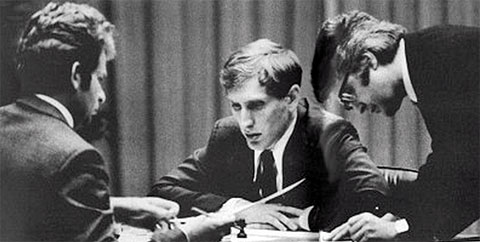
The game was continued the next day, and Fischer left the playing table for half an hour to protest the presence of the television cameras. Then he resigned on move 56. He told his second Lombardy that he had played too quickly "because the cameras distracted me."
Here's how the decisive moves of the game were reconstructed in the movie Pawn Sacrifice.
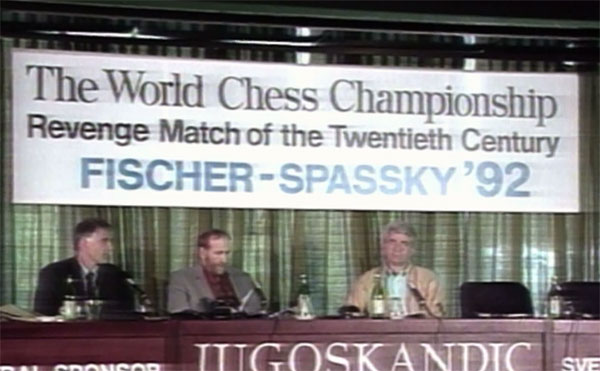
Twenty years later he was asked by a journalist whether he had been trying to create winning chances in the game by complicating a drawn position.”Basically that's right. Yes,” he replied.
The following will be replaced by analysis Sagar is providing.
Bobby Fischer in Iceland – 45 years ago (1)
In the final week of June 1972 the chess world was in turmoil. The match between World Champion Boris Spassky and his challenger Bobby Fischer was scheduled to begin, in the Icelandic capital of Reykjavik, on July 1st. But there was no sign of Fischer. The opening ceremony took place without him, and the first game, scheduled for July 2nd, was postponed. Then finally, in the early hours of July 4th, Fischer arrived. Frederic Friedel narrates.
Bobby Fischer in Iceland – 45 years ago (2)
The legendary Match of the Century between Boris Spassky and Bobby Fischer was staged in the Laugardalshöllin in Reykjavik. This is Iceland’s largest sporting arena, seating 5,500, but also the site for concerts – Led Zeppelin, Leonard Cohen and David Bowie all played there. 45 years after the Spassky-Fischer spectacle Frederic Friedel visited Laugardalshöllin and discovered some treasures there.